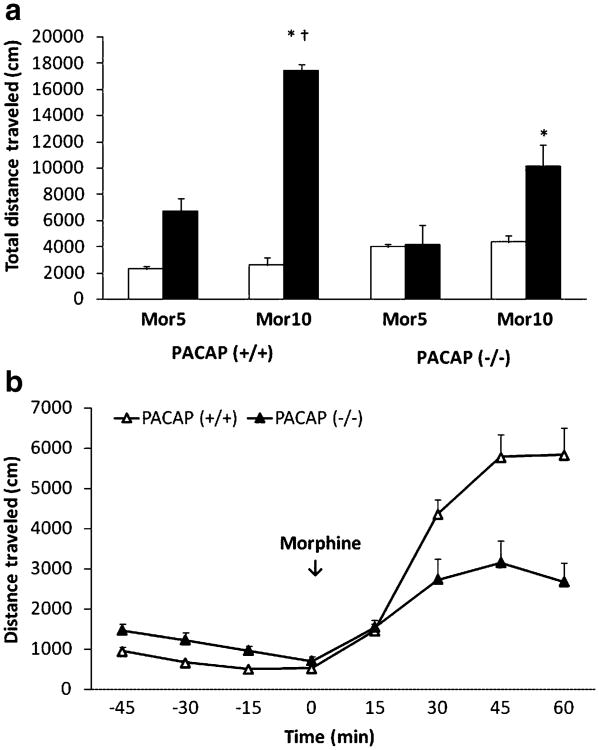Fig 2.
Motor stimulation induced by morphine in PACAP-deficient mice and their wild-type littermates/controls. Data are mean (±SEM) of the total distance traveled before (open bars) or following morphine treatment (a) in PACAP-deficient mice and their wild-type littermates/ controls (n=5–6 mice/dose per genotype). Distance traveled at 15-min bins before and following high dose morphine is shown in (b). Asterisk indicates a significant increase compared to their respective low-dose morphine (5 mg/kg)-treated group (p<0.05); Dagger indicates a significant increase compared to PACAP-deficient mice (p<0.05). Mor5 and Mor10 stand for 5 and 10 mg/kg dose of morphine, respectively

